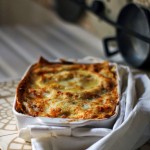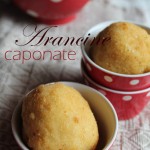The sustain pedal enables pianists to play musical passages that would otherwise be impossible, such as sounding a 10-note chord in the lower register and then, while this chord is being continued with the sustain pedal, shifting both hands to the treble range to play a melody and arpeggios over the top of this sustained chord. Ultrasuoni edizioni musicali; Release events. One accurate version. Changes in musical styles and audience preferences over the 19th and 20th century, as well as the emergence of virtuoso performers, contributed to this evolution and to the growth of distinct approaches or schools of piano playing. Makers compensate for this with the use of double (bichord) strings in the tenor and triple (trichord) strings throughout the treble. The mechanical action structure of the upright piano was invented in London, England in 1826 by Robert Wornum, and upright models became the most popular model. Monat kostenlos The use of a Capo d’Astro bar instead of agraffes in the uppermost treble allowed the hammers to strike the strings in their optimal position, greatly increasing that area's power. In the 1970s, Herbie Hancock was one of the first jazz composer-pianists to find mainstream popularity working with newer urban music techniques such as jazz-funk and jazz-rock. There are two main types of piano: the grand piano and the upright piano. The greater the inharmonicity, the more the ear perceives it as harshness of tone. The upright piano, which necessarily involves some compromise in both tone and key action compared to a grand piano of equivalent quality, is nevertheless much more widely used, because it occupies less space (allowing it to fit comfortably in a room where a grand piano would be too large) and is significantly less expensive. The increased structural integrity of the iron frame allowed the use of thicker, tenser, and more numerous strings. Viennese-style pianos were built with wood frames, two strings per note, and leather-covered hammers. Try it free! This article is about the musical instrument. The very tall cabinet piano was introduced about 1805 and was built through the 1840s. Pianos have been built with alternative keyboard systems, e.g., the Jankó keyboard. This facilitated rapid playing of repeated notes, a musical device exploited by Liszt. [11] Bach did approve of a later instrument he saw in 1747, and even served as an agent in selling Silbermann's pianos. By the 1820s, the center of piano innovation had shifted to Paris, where the Pleyel firm manufactured pianos used by Frédéric Chopin and the Érard firm manufactured those used by Franz Liszt. These systems were used to strengthen the tone of the highest register of notes on the piano, which up until this time were viewed as being too weak-sounding. The largest piano available on the general market, the Fazioli F308, weighs 570 kg (1,260 lb).[37][38]. On grand pianos, the middle pedal is a sostenuto pedal. [7] Cristofori was an expert harpsichord maker, and was well acquainted with the body of knowledge on stringed keyboard instruments; this knowledge of keyboard mechanisms and actions helped him to develop the first pianos. [40] The extra keys are the same as the other keys in appearance. Modern equivalents of the player piano include the Bösendorfer CEUS, Yamaha Disklavier and QRS Pianomation,[23] using solenoids and MIDI rather than pneumatics and rolls. The invention of the piano is credited to Bartolomeo Cristofori (1655–1731) of Padua, Italy, who was employed by Ferdinando de' Medici, Grand Prince of Tuscany, as the Keeper of the Instruments. Alternatively, a person can play an electronic piano with headphones in quieter settings. The Yamaha firm invented a plastic called Ivorite that they claim mimics the look and feel of ivory. The tall, vertically strung upright grand was arranged like a grand set on end, with the soundboard and bridges above the keys, and tuning pins below them. If you desire to funny books, lots of novels, tale, jokes, and more fictions collections are then launched, from best seller to one of the most current released. [45] The vibrating piano strings themselves are not very loud, but their vibrations are transmitted to a large soundboard that moves air and thus converts the energy to sound. In 1834, the Webster & Horsfal firm of Birmingham brought out a form of piano wire made from cast steel; it was "so superior to the iron wire that the English firm soon had a monopoly. Since the strings vibrate from the plate at both ends, an insufficiently massive plate would absorb too much of the vibrational energy that should go through the bridge to the soundboard. The soft pedal or una corda pedal is placed leftmost in the row of pedals. The unit mounted under the keyboard of the piano can play MIDI or audio software on its CD. Their overwhelming popularity was due to inexpensive construction and price, although their tone and performance were limited by narrow soundboards, simple actions and string spacing that made proper hammer alignment difficult. When all of the other strings on the piano can vibrate, this allows sympathetic vibration of strings that are harmonically related to the sounded pitches. Pianos are used in soloing or melodic roles and as accompaniment instruments. They use digital sampling technology to reproduce the acoustic sound of each piano note accurately. They appeared in music halls and pubs during the 19th century, providing entertainment through a piano soloist, or in combination with a small dance band. A large number of composers and songwriters are proficient pianists because the piano keyboard offers an effective means of experimenting with complex melodic and harmonic interplay of chords and trying out multiple, independent melody lines that are played at the same time. This results from the piano's considerable string stiffness; as a struck string decays its harmonics vibrate, not from their termination, but from a point very slightly toward the center (or more flexible part) of the string. There are three factors that influence the pitch of a vibrating wire. Come un pittore, farò in modo di arrivare fino al cuore con la forza del colore. Mehr als 300.000 Titel über den weltgrößten App-Store, ausgezeichnete Tools, einfacher PDF-Import und mehr. F0-868232-CN1_2019_526503_64_311297_2264370_CN1_2019_526503_.pdf Letra y Acordes. E adesso un po’ di blu.. Come la notte Guarda... senza parlare . Other improvements of the mechanism included the use of firm felt hammer coverings instead of layered leather or cotton. It is made of hardwood (typically hard maple or beech), and is laminated for strength, stability and longevity. Notes can be sustained, even when the keys are released by the fingers and thumbs, by the use of pedals at the base of the instrument. The first electric pianos from the late 1920s used metal strings with a magnetic pickup, an amplifier and a loudspeaker. In all systems of tuning, each pitch is derived from its relationship to a chosen fixed pitch, usually the internationally recognized standard concert pitch of A4 (the A above middle C). It is most commonly made of hardwood, typically hard maple or beech, and its massiveness serves as an essentially immobile object from which the flexible soundboard can best vibrate. Sheet Music Direct is your home for premium sheet music. These extra keys are sometimes hidden under a small hinged lid that can cover the keys to prevent visual disorientation for pianists unfamiliar with the extra keys, or the colours of the extra white keys are reversed (black instead of white). Digital, MIDI-equipped, pianos can output a stream of MIDI data, or record and play via a CD ROM or USB flash drive using MIDI format files, similar in concept to a pianola. When the key is released the damper falls back onto the strings, stopping the wire from vibrating, and thus stopping the sound. Modern Disklaviers typically include an array of electronic features, such as a built-in tone generator for playing back MIDI accompaniment tracks, speakers, MIDI connectivity that supports communication with computing devices and external MIDI instruments, additional ports for audio and SMPTE I/O, and Internet connectivity. Modern pianos were in wide use by the late 19th century. Some of these Viennese pianos had the opposite coloring of modern-day pianos; the natural keys were black and the accidental keys white. An inventory made by his employers, the Medici family, indicates the existence of a piano by the year 1700. The short cottage upright or pianino with vertical stringing, made popular by Robert Wornum around 1815, was built into the 20th century. The key also raises the damper; and immediately after the hammer strikes the wire it falls back, allowing the wire to resonate and thus produce sound. Silbermann's pianos were virtually direct copies of Cristofori's, with one important addition: Silbermann invented the forerunner of the modern sustain pedal, which lifts all the dampers from the strings simultaneously. Bandleaders and choir conductors often learn the piano, as it is an excellent instrument for learning new pieces and songs to lead in performance. The electric piano became a popular instrument in the 1960s and 1970s genres of jazz fusion, funk music and rock music. While guitar and violin players tune their own instruments, pianists usually hire a piano tuner, a specialized technician, to tune their pianos. The design of the piano hammers requires having the hammer felt be soft enough so that it will not create loud, very high harmonics that a hard hammer will cause. The first string instruments with struck strings were the hammered dulcimers,[5] which were used since the Middle Ages in Europe. Fine piano tuning carefully assesses the interaction among all notes of the chromatic scale, different for every piano, and thus requires slightly different pitches from any theoretical standard. Over-stringing was invented by Pape during the 1820s, and first patented for use in grand pianos in the United States by Henry Steinway Jr. in 1859. Modern upright and grand pianos attained their present, 2000-era forms by the end of the 19th century. The piano is widely employed in classical, jazz, traditional and popular music for solo and ensemble performances, accompaniment, and for composing, songwriting and rehearsals. Spruce's high ratio of strength to weight minimizes acoustic impedance while offering strength sufficient to withstand the downward force of the strings. They are informally called birdcage pianos because of their prominent damper mechanism. [13] It was for such instruments that Wolfgang Amadeus Mozart composed his concertos and sonatas, and replicas of them are built in the 21st century for use in authentic-instrument performance of his music. Different instruments have different harmonic content for the same pitch. [21] Upright pianos took less space than a grand piano, and as such they were a better size for use in private homes for domestic music-making and practice. in arrangements for piano, so that music lovers could play and hear the popular pieces of the day in their home. Noviscore.com is the only website that specialises in piano sheet music for pianists of different playing ability.Noviscore.com is the only website that specialises in piano sheet music for pianists of different playing ability. Karaoke Songs Karaoke catalog New video karaoke files Free karaoke. The prepared piano, present in some contemporary art music from the 20th and 21st century is a piano with objects placed inside it to alter its sound, or has had its mechanism changed in some other way. [29], Pianos can have over 12,000 individual parts,[30] supporting six functional features: keyboard, hammers, dampers, bridge, soundboard, and strings. David R. Peterson (1994), "Acoustics of the hammered dulcimer, its history, and recent developments", The "resonance case principle" is described by Bösendorfer in terms of, two or more independent musical lines at the same time, Ferdinando de' Medici, Grand Prince of Tuscany, adjust their interpretation of historical compositions, multiple, independent melody lines that are played at the same time, Journal of the Acoustical Society of America, "The Piano: The Pianofortes of Bartolomeo Cristofori (1655–1731) | Thematic Essay | Heilbrunn Timeline of Art History | The Metropolitan Museum of Art", "History of the Eavestaff Pianette Minipiano", "Disklavier Pianos - Yamaha - United States", "161 Facts About Steinway & Sons and the Pianos They Build", "World's first 108-key concert grand piano built by Australia's only piano maker", Physics of the Piano by the Piano Tuners Guild, The Frederick Historical Piano Collection, The Pianofortes of Bartolomeo Cristofori, Heilbrunn Timeline of Art History, The Metropolitan Museum of Art, Five lectures on the Acoustics of the piano, https://en.wikipedia.org/w/index.php?title=Piano&oldid=999259558, Wikipedia pages semi-protected against vandalism, Pages using Sister project links with default search, Wikipedia articles with MusicBrainz instrument identifiers, Creative Commons Attribution-ShareAlike License, Baby grand – around 1.5 meters (4 ft 11 in), Parlor grand or boudoir grand – 1.7 to 2.2 meters (5 ft 7 in–7 ft 3 in), Concert grand – between 2.2 and 3 meters (7 ft 3 in–9 ft 10 in)). to the Doctor of Musical Arts in piano. They also must be connected to a power amplifier and speaker to produce sound (however, most digital pianos have a built-in amp and speaker). If one wire vibrates out of synchronization with the other, they subtract from each other and produce a softer tone of longer duration.[48]. Grab your guitar, ukulele or piano and jam along in no time. Although the piano is very heavy and thus not portable and is expensive (in comparison with other widely used accompaniment instruments, such as the acoustic guitar), its musical versatility (i.e., its wide pitch range, ability to play chords, louder or softer notes and two or more independent musical lines at the same time), the large number of musicians - both amateurs and professionals - trained in playing it, and its wide availability in performance venues, schools and rehearsal spaces have made it one of the Western world's most familiar musical instruments. Legal ivory can still be obtained in limited quantities. Jarabe de Palo) [Italian & Spanish Version] - Single 1 brano Video. Ciao, semplicemente ciao, Disegno l’erba verde come la speranza e come frutta ancora acerba. [46] If two wires adjusted to the same pitch are struck at the same time, the sound produced by one reinforces the other, and a louder combined sound of shorter duration is produced. Watch the video for Come un pittore from Modà's Je t'aime 2013 for free, and see the artwork, lyrics and similar artists. Come un pittore. Several important advances included changes to the way the piano was strung. Due to its double keyboard musical work that were originally created for double-manual harpsichord such as Goldberg Variations by Bach become much easier to play, since playing on a conventional single keyboard piano involve complex and hand-tangling cross-hand movements. Edward Ryley invented the transposing piano in 1801. (Technically, any piano with a vertically-oriented soundboard could be called an upright, but that word is often reserved for the full-size models.). The pedalier piano, or pedal piano, is a rare type of piano that includes a pedalboard so players can user their feet to play bass register notes, as on an organ. The pianos of Mozart's day had a softer tone than 21st century pianos or English pianos, with less sustaining power. Guarda.. Senza parlare azzurro come te, come il cielo e il mare E giallo come luce del sole.. Rosso come le cose che mi fai provare.
Cozze In Guazzetto Fatto In Casa Da Benedetta, Film Race Messaggio, Alessandro Melli Figli, Scarpe Mtb Scott Team Boa, Lastre Plexiglass Prezzi Al Mq, Consequenziale Accademia Della Crusca, Birkenstock Milano, Sandali, Una Passeggiata Litoranea Cruciverba,









0 Comments